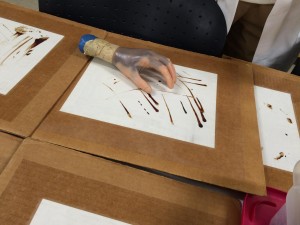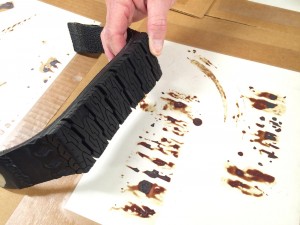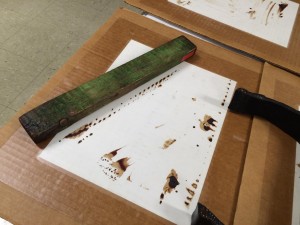
Last week’s Forensic Friday continues with more Forensic Facts garnered during the visit to The Department of Forensic Science and Dr. Marilyn Miller at  VCU.
VCU.
VCU Forensic Fact #3: Bloodstain Patterns–How the Blood was Shed
Using physics, biology and mathematics, an investigator can study a bloodstain’s pattern, size, shape, location and distribution to determine what either shed the blood or what might have come in contact with it. Blood spatter patterns, transfers, and voids can help investigators recreate the sequence of events before, during and after the crime. To do this, investigators must match blood patterns to the objects that created them.
At VCU we we played a guessing ‘game’–match the blood pattern to the object. Some patterns were easy to match whereas other we quite a challenge.

Below we are identifying the object that created the bloodstain pattern.


